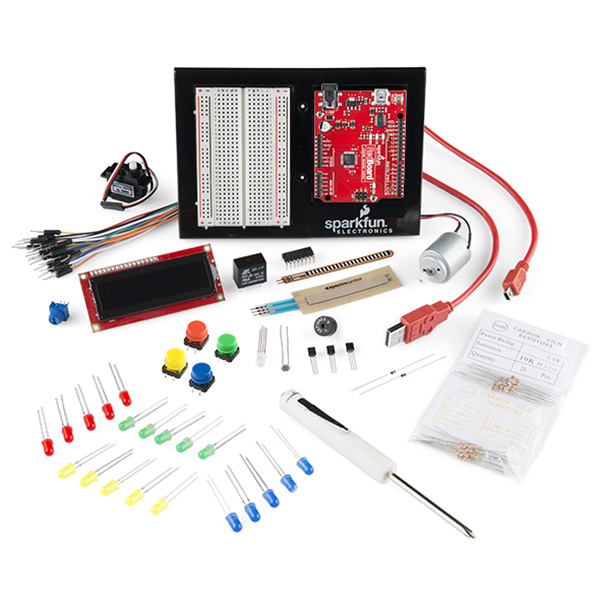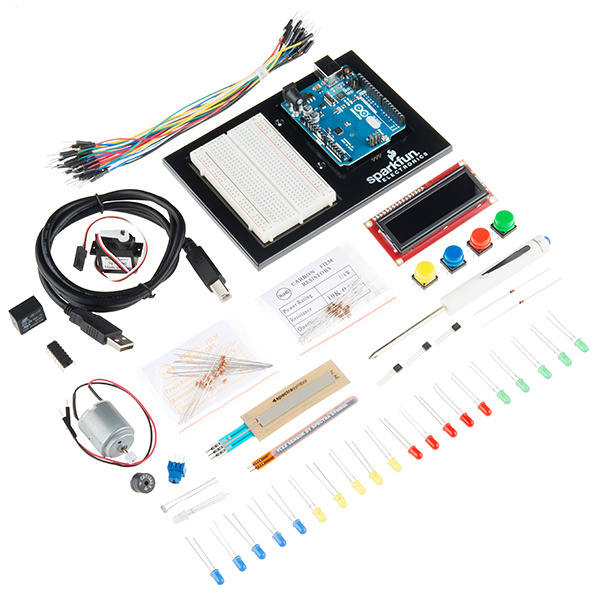SIK Experiment Guide for Arduino - V3.3
This Tutorial is Retired!
View the updated tutorial: SparkFun Inventor's Kit Experiment Guide - v4.0
Introduction: Hardware
The SparkFun Inventor's Kit is your map for navigating the waters of beginning embedded electronics. This kit contains all the information and parts you will need to create 16 circuits that cover the basics of programming and hardware interactions. At the center of this kit is one core philosophy -- that anyone can (and should) experiment with electronics. When you're done with this guide, you'll have the know-how to start creating your own projects and experiments.
This guide is also available as a downloadable PDF, if you prefer.
SparkFun Inventor's Kit - V3.3
You should have one of the two following versions of the SIK. If you need a overview of the parts included in your kit, please click on the product link below.
The primary difference between the two kits is the microcontroller included in the kit. The SparkFun Inventor's Kit includes a SparkFun RedBoard, while the SparkFun Inventor's Kit for Arduino Uno includes an Arduino Uno R3. At the heart of each is the ATmega328p microcontroller, giving both the same functionality underneath the hood. Both development boards are capable of taking inputs (such as the push of a button or a reading from a light sensor) and interpreting that information to control various outputs (like a blinking LED light or an electric motor). And much, much more!
If you need more information to determine which microcontroller is right for you, please check out the following tutorials.
RedBoard Hookup Guide
What is an Arduino?
Open Source!
At SparkFun, our engineers and educators have been improving this kit and coming up with new experiments for a long time now. We would like to give attribution to Oomlout, since we originally started working off their Arduino Kit material many years ago. The Oomlut version is licensed under the Creative Commons Attribution Share-Alike 3.0 Unported License.
SparkFun's version 3.3 is licensed under the Creative Commons Attribution Share-Alike International License.
Suggested Reading
Before continuing on with this tutorial, we recommend you be familiar with the concepts in the following tutorials:

